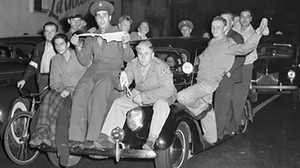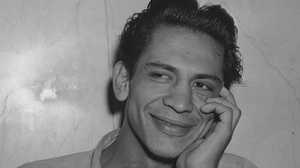How the Zoot Suit Got So Much Swag
The evolution of a flamboyant style that became a symbol for marginalized communities.
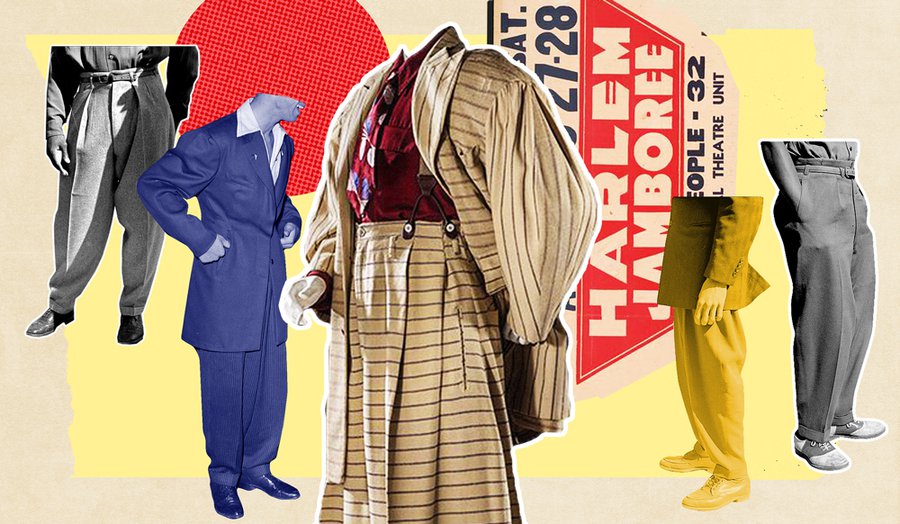
During the first half of the 20th century, new fashion trends often permeated culture by starting at the top and trickling down to the masses over time. To some degree this is true of the zoot suit, but the style’s popularization also sets a precedent for something completely new. As Black and brown communities affirmed their place in society, the zoot suit represented a powerful evolution of style, from the desire to be seen to the desire to be politically heard. And by the end of the century, those marginalized communities continued to subvert mainstream fashion in favor of loose-fitting silhouettes. However, in a reversal of earlier trickle-down trends, their so-called “street” fashion ironically found itself increasingly co-opted by high-end fashion labels.
The zoot suit originated in Harlem, New York in the late 1930s and was adapted from the London “drape” suit, a design popularized by the Duke of Windsor, Edward VIII, earlier in the decade. In the United States, young men in African American and Latino American communities across the country made more eccentric changes to the “drape” suit silhouette. Many Black and brown men did not have access to tailors and altered their clothing at home from hand-me-downs, or after buying suits in retail stores in larger sizes. Due to the extra fabric of the suits, the zoot suit possessed added padding, broadened jacket shoulders, extended jacket length and cinched trouser waists. And as the zoot suit became popular in the Jazz community, the style continued to gain national recognition.
However, like many fashion trends in the 20th century associated with African and Latino Americans like baggier silhouettes or hooded sweatshirts, the zoot suit also became a symbol used to target these communities. The 1943 Zoot Suit Riots in Los Angeles are a prime example of the demonization of Black and brown Americans via their sartorial choices. Wartime rationing of fabrics during WWII led the broader white community to view “zoot suiters,” with their baggy pants and long coats, as unpatriotic—or at least that was a convenient rationale for targeted harassment of those wearing them.
For 10 nights in May and June, law enforcement officers—aided by white sailors stationed in the city while awaiting deployment—terrorized Mexican American neighborhoods in search of “zoot-suiters,” whom they associated with rising crime rates. When Mexican youths struck back, the fighting intensified. The police and military men tore the clothes off young men’s bodies, beat them viciously and unlawfully apprehended them. One Los Angeles newspaper even printed a guide on how to “de-zoot” someone.
The zoot suit style fell out of favor after WWII. But its exaggerated silhouette exemplifies how exclusive barriers to fashion are broken down through the creative ingenuity of the unsung. Throughout the 20th century, Black and brown communities continued to create fashion that spoke to the desire to be viewed on their terms, in their own style.
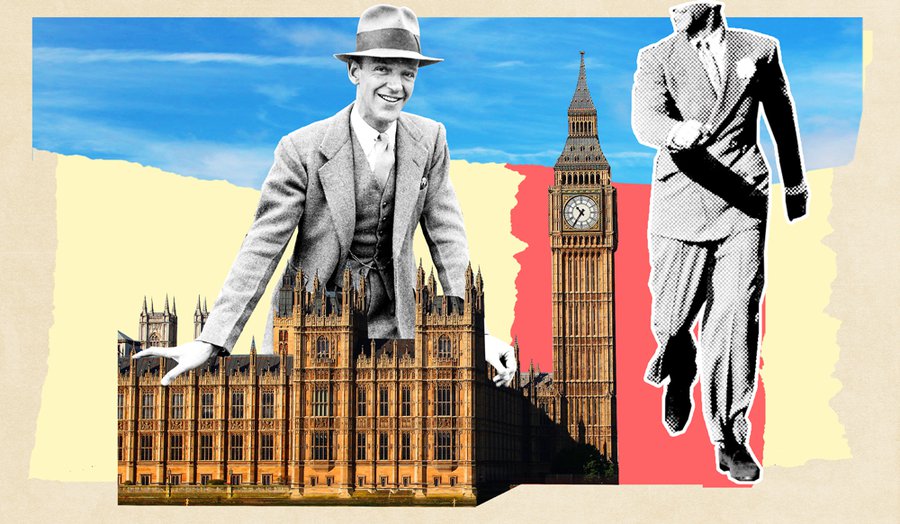
London was the center of menswear design in the 19th and 20th centuries. Frederick Scholte, personal tailor to the Duke of Windsor, Edward VIII, is often credited with pioneering the drape suit in the mid-1930s. Fashion icons like Fred Astaire were photographed wearing the London “drape” suit, and the style soon matriculated to the United States. The suit was fashioned out of the light “V” silhouette created by army uniform jackets. It possessed more room in the chest and shoulders of the suit jacket and trousers, and the lower half of the jacket softly clung to the bottom, creating the drape effect.
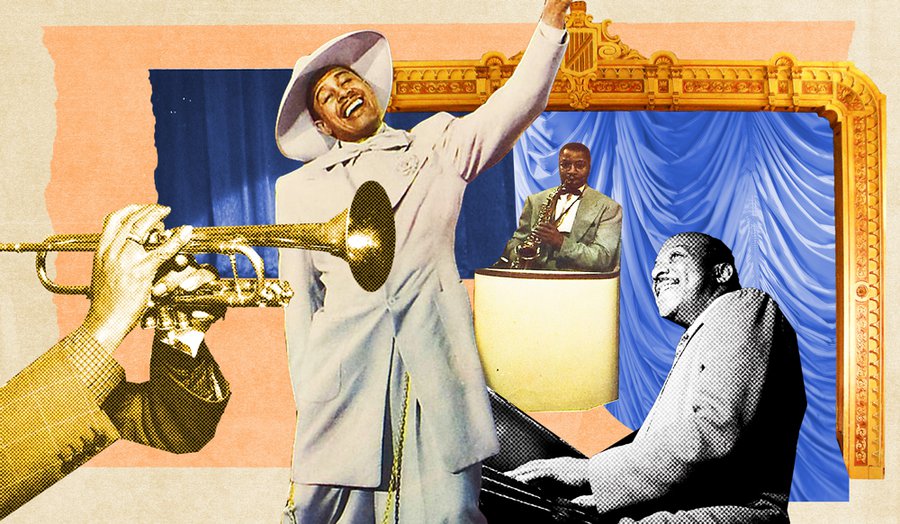
Jazz culture gave the zoot suit high visibility. During the peak of the style’s popularity in the late 1930s into the 1940s, major performers like Cab Calloway and Count Basie were often seen wearing the suit. The oversized nature of the zoot suit’s silhouette, with its wider armholes and roomier trousers, allowed for performers to move more freely while performing the exuberant style of music.
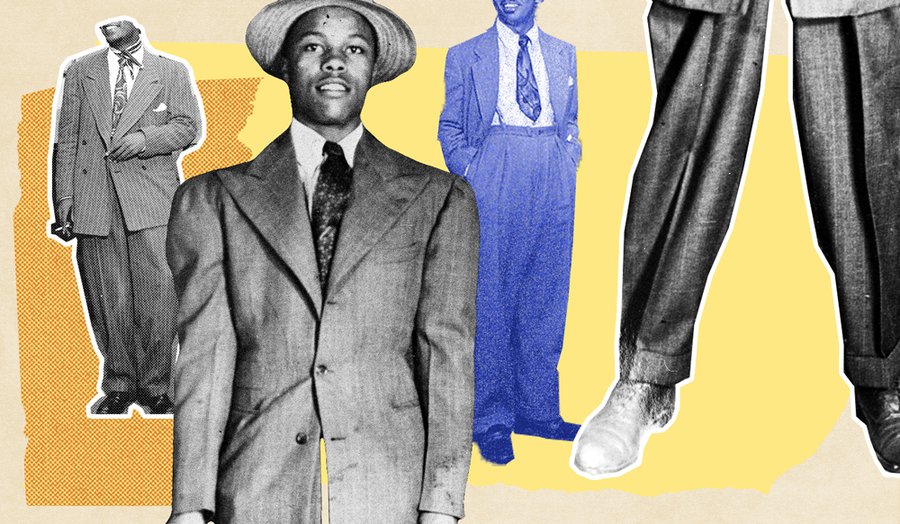
The zoot suit offered a prime example of fashion’s democratization as the bold, new style gained mass appeal. Young, mainstream wearers all across the country embraced and enhanced their own suits. In this portrait, a teen poses proudly in his single-breasted, heavily padded, large notch-lapel zoot suit.
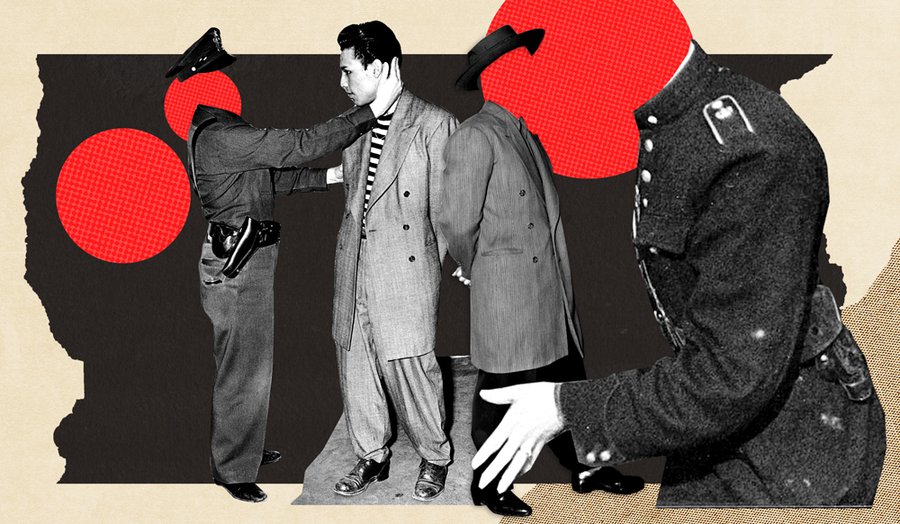
In the summer of 1943, sensational press coverage of the killing of a young Latino man—known as the Sleepy Lagoon murder given its location—aroused fear among white Angelenos and made Mexican Americans targets of law enforcement. Tensions came to a head after a fight between a number of U.S. sailors and young Mexican-American men in zoot suits. Police racially profiled individuals wearing the suits, unjustifiably beating and apprehending hundreds of young men, including Black and Filipino Americans.
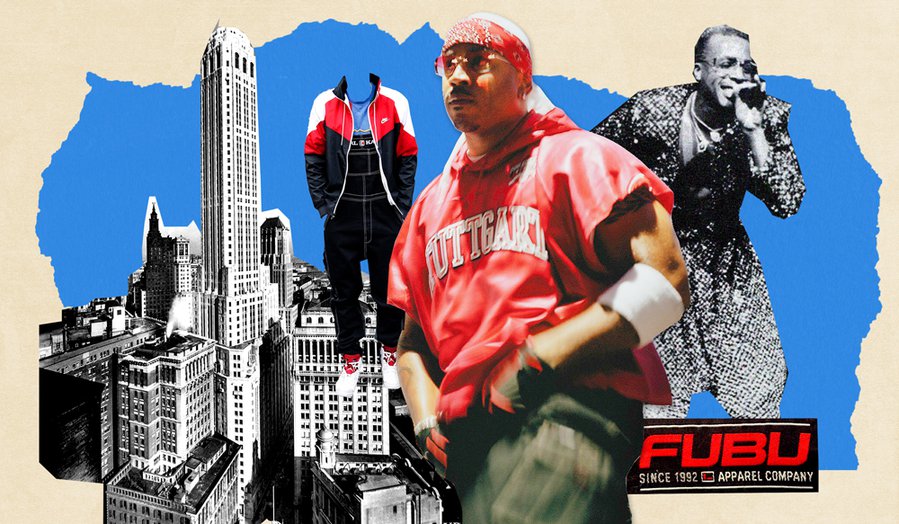
During the rise of hip-hop music during the 1980s and into the 1990s, a new style of baggier clothing once again entered the realm of popular fashion. The style was pioneered by creatives like Dapper Dan and companies like Karl Kani, FUBU and Cross Colours, and often worn by artists whose music protested systemic inequities in the justice system. Much as with the zoot suit half a century earlier, this style was viewed prejudicially by law enforcement agencies. And similarly to the zoot, these looser silhouettes demonstrated fashion as a form of expression and agency for marginalized communities, who found a voice through their style.

Darnell-Jamal Lisby is a fashion historian and Assistant Curator of the Cleveland Museum of Art. Prior to the CMA, he assisted fashion curatorial efforts at institutions including the Metropolitan Museum of Art, the Museum at FIT and most recently, Cooper Hewitt Smithsonian Design Museum, where he was on the curatorial team that organized the 2020/2021 Willi Smith: Street Couture exhibition. He has contributed to publications such as the Fashion and Race Database and Teen Vogue on the impact of Blackness on fashion in the 20th and 21st centuries.
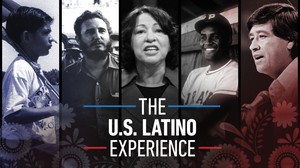
Explore our new collection featuring a selection of films documenting the U.S. Latino Experience — along with articles and original features exploring America’s continued struggle with democracy, inclusion and justice for Hispanics and Latinos, and celebrating their contributions to the American story.
Explore nuestra nueva colección: una selección de películas que, documentan experiencias latinas en los Estados Unidos, junto con artículos y videos originales que exploran la lucha continua de los Estados Unidos por la democracia, la inclusión y la justicia de los latinos y que, celebran sus aportes a la historia del país.






